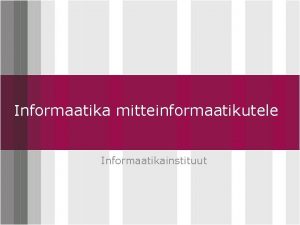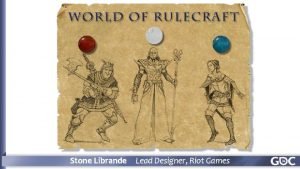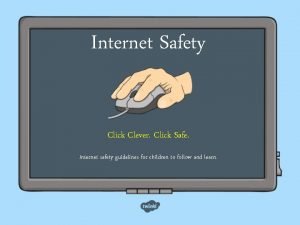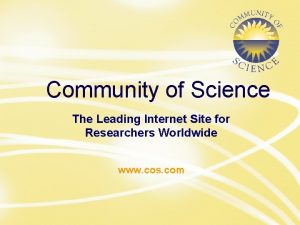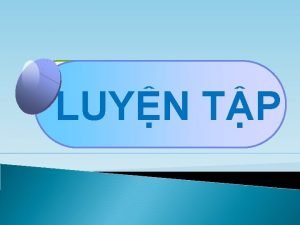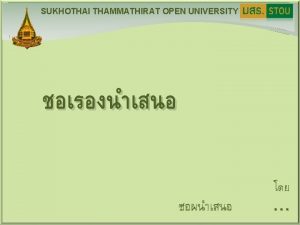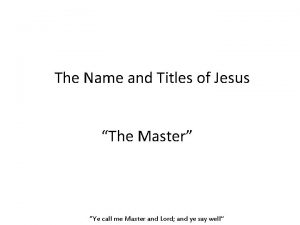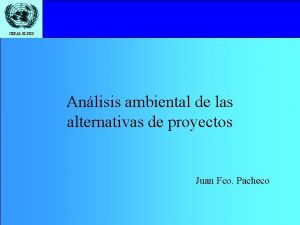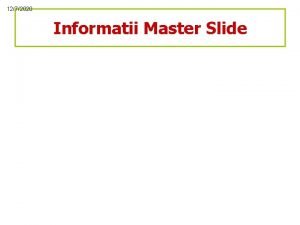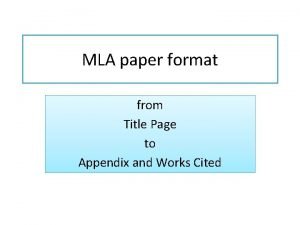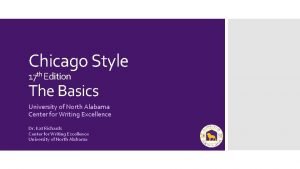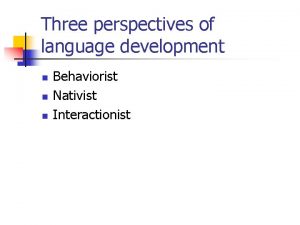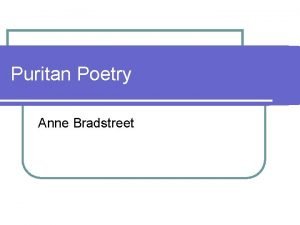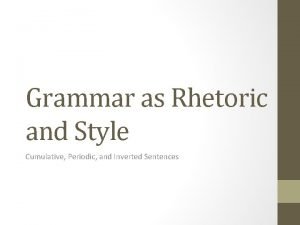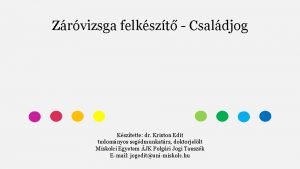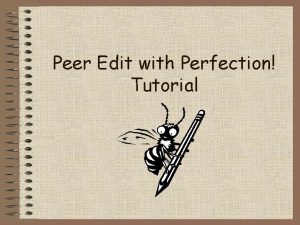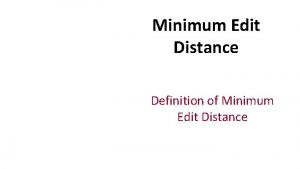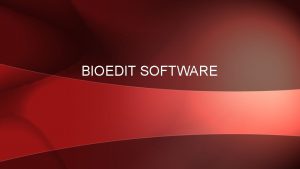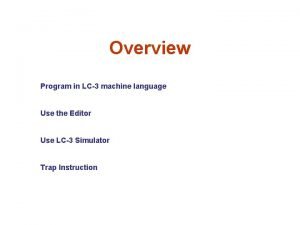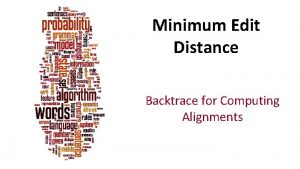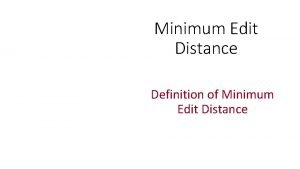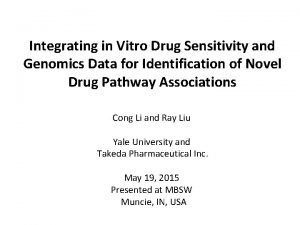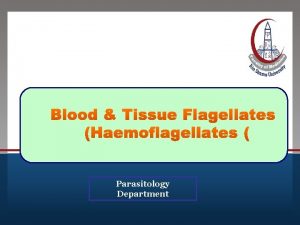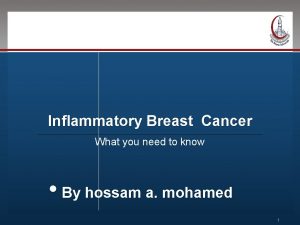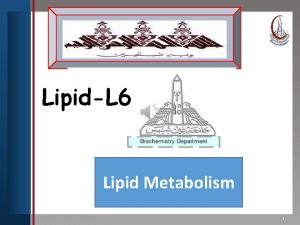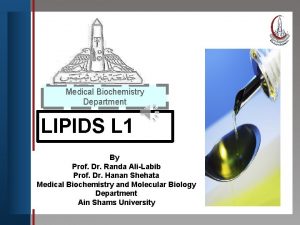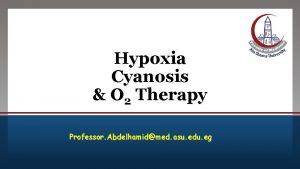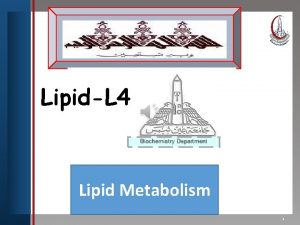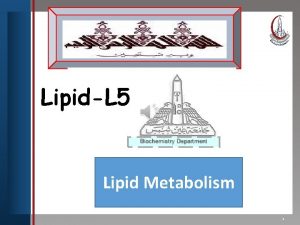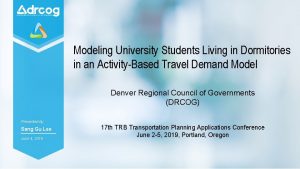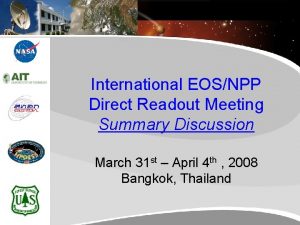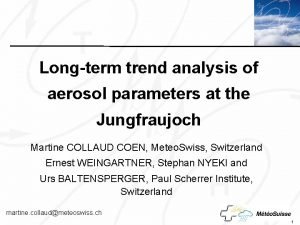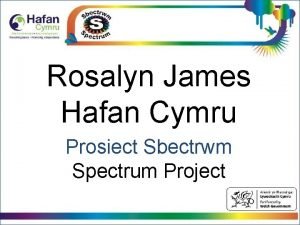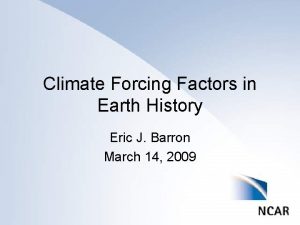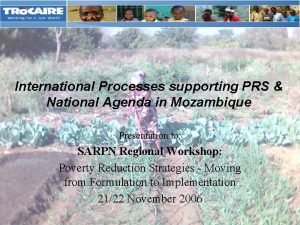Click to edit Master title style Chapter 22












































- Slides: 44

Click to edit Master title style Chapter 22 Heart

Why have a heart? Move nutrients and oxygen through the body.

How does the heart do its job? • First, get oxygen into the blood • Second, get oxygenated blood to the rest of the body

Fig. 22. 2 Location of heart Superior border 2 nd rib Right border Sternum • Slightly left of center, posterior to sternum • Rotated; right border sits anterior to left border • Base of heart is posterior and Left superior border – formed by left atrium Diaphragm • Superior border Inferior border (a) Borders of the heart – formed by ascending aorta, pulmonary trunk, superior vena cava • Conical bottom end is apex • Inferior border – formed by right ventricle

Fig. 22. 2 Location of heart Trachea Left lung Aortic arch Right lung • From anterior view, Superior right ventricle is most vena cava obvious • Left ventricle sits behind Ascending aorta Pulmonary trunk Right atrium Right ventricle (b) Heart and lungs, anterior view Left ventricle

Fig. 22. 6 Blood flow • Blood flows into the heart from the superior vena cava and the inferior vena cava Superior vena cava – Superior vena cava carries blood from head, neck, arms, superior Right trunk atrium – Inferior vena cava carries blood Opening for from lower limbs, inferior trunk inferior – This blood is high in CO 2 and low vena cava Right ventricle in O 2 Inferior vena cava Pulmonary artery

Fig. 22. 6 • Blood first enters the right atrium, then the right ventricle • The right ventricle pumps blood out the pulmonary arteries to the lungs – In the lungs, the blood exchanges CO 2 for O 2 Superior vena cava Pulmonary artery Right atrium Opening for inferior vena cava Right ventricle Inferior vena cava Pulmonary artery Pulmonary trunk

Fig. 22. 1 • Flow and gas exchange in lungs is called pulmonary circulation Systemic circulation 4 Lung Basic pattern of blood flow 2 2 1 Right side of heart 2 Lungs 3 Left side of heart Pulmonary circulation Right 3 1 side Left side Heart 4 Systemic cells Systemic circulation 4 Pulmonary circulation Oxygenated blood Deoxygenated blood Gas exchange

• Blood returns to the heart through the pulmonary veins • The pulmonary veins empty into the left atrium Fig. 22. 5 b Heart, Posterior View Left pulmonary artery Left pulmonary veins Left atrium Right pulmonary artery Right pulmonary veins Right atrium Left ventricle Right ventricle

• The left atrium pumps blood into the left ventricle • The left ventricle pumps blood out the aorta to the body Fig. 22. 6 Aortic arch Ascending aorta Descending aorta Left atrium Right ventricle Left ventricle

Fig. 22. 6 Form and Function • What differences do you notice between the atria and the Right ventricles? atrium • What’s different between the right and left ventricle? Right ventricle Left atrium Left ventricle

Fig. 22. 6 Form and Function • Atria do not make powerful contractions • Left ventricle makes more powerful contractions than right ventricle • How does the body ensure blood flows in only one direction? Left atrium Right ventricle Left ventricle Copyright © Mc. Graw-Hill Education. Permission required for reproduction or display.

Valves • Both atria fill at the same time, contract at the same time • Contraction of atria forces open valves between atria and ventricles • Right atrioventricular valve (AKA tricuspid valve) separates right atrium from right ventricle • Left atrioventricular valve (AKA bicuspid valve) separates left atrium from left ventricle

Valves Fig. 22. 7 • Right atrioventricular valve (AKA tricuspid valve) separates right atrium from Right right ventricle atrioventricular valve • Left atrioventricular valve (AKA bicuspid valve) separates left atrium from Aortic semilunar valve left ventricle Pulmonary semilunar valve Posterior Left atrioventricular valve Fibrous skeleton Anterior

Valves Left atrium • Atrioventricular valves are attached to inside of ventricles by chordae tendineae attached to papillary muscles inside ventricle – prevents inversion of valve flaps when ventricle contracts – typically 3 papillary muscles in right ventricle, 2 in left ventricle Left A/V valve Right A/V valve Chordae tendineae Papillary muscles

Valves • Contraction of ventricles forces atrioventricular valves closed and opens semilunar valves

Valves Fig. 22. 7 • Pulmonary semilunar valve separates right ventricle from pulmonary Right trunk atrioventricular valve • Aortic semilunar valve separates left ventricle from Aortic semilunar aorta valve • As ventricles relax, semilunar valves close Pulmonary semilunar valve Posterior Left atrioventricular valve Fibrous skeleton Anterior

Valves • Semilunar valves don’t have chordae tendineae • Cupped structure of valve fills with blood as ventricles contract, pushing valve back into place Pulmonary semilunar valve Left A/V valve Aortic semilunar valve Right A/V valve Chordae tendineae Papillary muscles

Copyright © Mc. Graw-Hill Education. Permission required for reproduction or display. (a) Ventricular Systole (Contraction)

Copyright © Mc. Graw-Hill Education. Permission required for reproduction or display. (b) Ventricular Diastole (Relaxation)

Sounds of a heartbeat • Lub-dub, lub-dub • “lub” is sound of atrioventricular valves closing • “dub” is sound of semilunar valves closing • Sounds are not heard best in exact spot of valve Aortic semilunar valve Pulmonary semilunar valve Left atrioventricular valve Right atrioventricular valve Actual location of heart valve Area where valve sound is best heard Locations of individual heart valves and the ideal listening sites for each valve are shown.

Walls of heart chambers • Wall between atria is interatrial septum • Wall between ventricles is interventricular septum Interatrial septum Interventricular septum

Fig. 22. 2 Pericardium • Heart sits inside pericardium – fibrous sac – very tough – serous lining made of two layers of epithelial tissue with tiny amount of water between Mediastinum Left lung Ascending aorta Pleura (cut) Pericardium (cut) Apex of heart Diaphragm (cut) (c) Serous membranes of the heart and lungs

Fig. 22. 2 Pericardium Posterior • Restricts heart movement, prevents Thoracic vertebra bouncing Aortic arch (cut) • Prevents heart overfilling with blood Heart Left lung Right lung Sternum Anterior (d) Cross-sectional view

Fig. 22. 3 Pericardium • Outer layer is fibrous pericardium – dense connective tissue – attached to diaphragm and base of aorta, pulmonary trunk, vena cava Fibrous pericardium Parietal layer of serous pericardium Pericardial cavity Visceral layer of serous pericardium (epicardium) Fibrous pericardium Parietal layer of serous pericardium Pericardial cavity

Fig. 22. 3 Pericardium • Inner layer is serous pericardium – double layer formed from single “balloon” stretched around heart – parietal layer connected to fibrous pericardium – pericardial cavity contains serous fluid secreted by serous membranes – visceral layer covers outside of heart (AKA epicardium) Fibrous pericardium Parietal layer of serous pericardium Pericardial cavity Visceral layer of serous pericardium (epicardium) Fibrous pericardium Parietal layer of serous pericardium Pericardial cavity

Fig. 22. 3 Pericarditis • Inflammation of pericardium makes blood vessels leaky • Fluid accumulates in pericardial cavity – prevents heart from pumping fully

Fig. 22. 5 a External anatomy of heart • Coronary arteries supply blood to heart muscle • Coronary veins return blood from heart tissue back to right atrium – Blood enters atrium through coronary sinus Left coronary artery (in coronary sulcus) Right coronary artery (in coronary sulcus) Circumflex artery (in coronary sulcus)

Fig. 22. 10 Cardiac muscle Openings of transverse (T) tubules Intercalated disc Folded sarcolemma • fibers are striated • intercalated discs have desmosomes and gap junctions – link cells electrically and mechanically – impulses sent immediately form one cell to next Desmosomes Gap junctions Endomysium Intercalated discs Sarcolemma (a) Cross section of cardiac muscle cells Nucleus Mitochondrion (b) Intercellular junctions

Fig. 22. 11 Sinoatrial node (pacemaker) Internodal pathway Atrioventricular node Atrioventricular bundle (bundle of His) Purkinje fibers 1. Muscle impulse is generated at the sinoatrial node. It spreads throughout the atria and to the atrioventricular node by the internodal pathway. Left bundles Right bundle • Heart is autorhythmic – starts its own beating • Specialized cells that initiate and conduct muscle impulses are collectively the conducting system

Fig. 22. 11 Sinoatrial node (pacemaker) Atrioventricular node Internodal pathway Atrioventricular node Atrioventricular bundle 2. Atrioventricular node cells delay the muscle impulse as it passes to the atrioventricular bundle (Bundle of His).

Fig. 22. 11 Sinoatrial node (pacemaker) Atrioventricular node Internodal pathway Atrioventricular node Atrioventricular bundle 3. The atrioventricular bundle (bundle of His) conducts the muscle impulse into the interventricular septum. Atrioventricular bundle Interventricular septum

Fig. 22. 11 4. Within the interventricular septum, the left and right bundles split from the atrioventricular bundle. Atrioventricular bundle Interventricular septum Left and right bundles

Fig. 22. 11 5. The muscle impulse is delivered to Purkinje fibers in each ventricle and distributed throughout the ventricular myocardium. Atrioventricular bundle Interventricular septum Left and right bundles Purkinje fibers

Fig. 22. 11 Superior vena cava Right atrium Left atrium Sinoatrial node (pacemaker) Internodal pathway Atrioventricular node Atrioventricular bundle (bundle of His) Interventricular septum Right bundle Purkinje fibers Atrioventricular bundle Left bundles Purkinje fibers 1 Atrioventricular node Muscle impulse is generated at the sinoatrial node. It spreads throughout the atria and to the atrioventricular node by the internodal pathway. 2 Atrioventricular node cells delay the muscle impulse as it passes to the atrioventricular bundle. Atrioventricular bundle Interventricular septum Left and right bundles 3 The atrioventricular bundle (bundle of His) conducts the muscle impulse into the interventricular septum. 4 Within the interventricular septum, the left and right bundles split from the atrioventricular bundle. Purkinje fibers 5 The muscle impulse is delivered to Purkinje fibers in each ventricle and distributed throughout the ventricular myocardium.

0. 8 second R Millivolts +1 1 P wave 3 T wave 0 Q S 2 QRS complex – 1 The events of a single cardiac cycle as recorded on an electrocardiogram.

Fig. 22. 13 a Copyright © Mc. Graw-Hill Education. Permission required for reproduction or display. (a) Ventricular Systole (Contraction) Ventricular systole • • Contraction of ventricles Semilunar valves open Blood flows into arteries Larger of blood pressure measurements Aortic arch Blood flow into ascending aorta Ascending aorta Pulmonary trunk Blood flow into right atrium Blood flow into pulmonary trunk Right atrium Left atrium Ventricular contraction pushes blood against the open AV valves, causing them to close. Contracting papillary muscles and the chordae tendineae prevent valve flaps from everting into atria. Ventricles contract, forcing semilunar valves to open and blood to enter the pulmonary trunk and the ascending aorta. Atrioventricular valves closed Semilunar valves open Right ventricle Left ventricle Cusp of semilunar valve Cusp of atrioventricular valve Blood in ventricle Posterior Left AV valve (closed) Right AV valve (closed) Left ventricle Right ventricle Aortic semilunar valve (open) Pulmonary semilunar valve (open) Anterior Transverse section

Fig. 22. 13 b (b) Ventricular Diastole (Relaxation) Ventricular diastole • • Relaxation of ventricles AV valves open Blood flows into ventricles from atria Smaller of blood pressure measurements Aortic arch Blood flow into right atrium Blood flow into left ventricle Right atrium Left atrium During ventricular relaxation, some blood in the ascending aorta and pulmonary trunk flows back toward the ventricles, filling the semilunar valve cusps and forcing them to close. Blood flow into right ventricle Ventricles relax and fill with blood both passively and then by atrial contraction as AV valves remain open. Atrioventricular valves open Semilunar valves closed Atrium Right ventricle Cusp of atrioventricular valve Left ventricle Blood Cusps of semilunar valve Chordae tendineae Papillary muscle Posterior Left AV valve (open) Right AV valve (open) Left ventricle Right ventricle Aortic semilunar valve (closed) Pulmonary semilunar valve (closed) Anterior Transverse section

Fetal Circulation • Where does oxygen come from? • Where does blood get filtered? • Where do nutrients come from? • Different needs of fetal circulation: – Transport blood to and from placenta – Return blood to fetal circulatory system – Bypass developing liver and lungs

Umbilical Cord • Deoxygenated blood travels to placenta through umbilical arteries • Oxygenated blood arrives from placenta through umbilical vein • Maternal and fetal blood do not mix

Bypassing the Liver • Umbilical vein splits near liver • ~2/3 blood travels to developing liver through hepatic portal vein • Ductus venosus carries ~1/3 of blood to inferior vena cava

Bypassing the Lungs • Blood flows into right atrium • Foramen ovale is hole between right and left atria – Most blood flows through foramen ovale – A small amount flows into right ventricle and through pulmonary trunk

Bypassing the Lungs • Ductus arteriosus is connection between pulmonary artery and aorta – Most blood in pulmonary artery goes through ductus arteriosus, bypassing pulmonary circuit

Fetal Cardiovascular Structure Ductus arteriosus Ductus venosus Foramen ovale Postnatal Structure Ligamentum arteriosum Ligamentum venosum Fossa ovalis Medial umbilical Umbilical arteries ligaments Round ligament of liver (ligamentum teres) Umbilical vein
 Click to edit master title style
Click to edit master title style Click to edit master title style
Click to edit master title style Title style
Title style Click to edit master title style
Click to edit master title style Soft edit meaning
Soft edit meaning Safety click
Safety click E safety
E safety Click clever click safe
Click clever click safe Click clever click safe
Click clever click safe Master title style
Master title style Master title style
Master title style Click to add title
Click to add title Click to add title
Click to add title Click to add title
Click to add title Didaskolos
Didaskolos Master title
Master title What is a slide title master pair
What is a slide title master pair Reports and proposals
Reports and proposals Title title
Title title Introduction apa format
Introduction apa format Appendix mla example
Appendix mla example Chicago style title page
Chicago style title page Block lettering styles
Block lettering styles What is formal style writing
What is formal style writing Informal literary style
Informal literary style Nnn speech
Nnn speech Puritan poetry examples
Puritan poetry examples Periodic vs cumulative sentence
Periodic vs cumulative sentence Kriston edit
Kriston edit Kronos workforce central 8
Kronos workforce central 8 Quick edit+
Quick edit+ Peer editing meaning
Peer editing meaning Minimum edit distance nlp
Minimum edit distance nlp Edit decision list
Edit decision list Feel free to edit
Feel free to edit Everyday edit
Everyday edit Bio edit
Bio edit Lc-3 multiplication
Lc-3 multiplication Frivaldszky edit
Frivaldszky edit Minimum edit distance backtrace
Minimum edit distance backtrace Https //forms.gle link
Https //forms.gle link Yang merupakan modus edit, kecuali
Yang merupakan modus edit, kecuali Daily oral language grade 2
Daily oral language grade 2 Weighted minimum edit distance
Weighted minimum edit distance Gene edit
Gene edit

